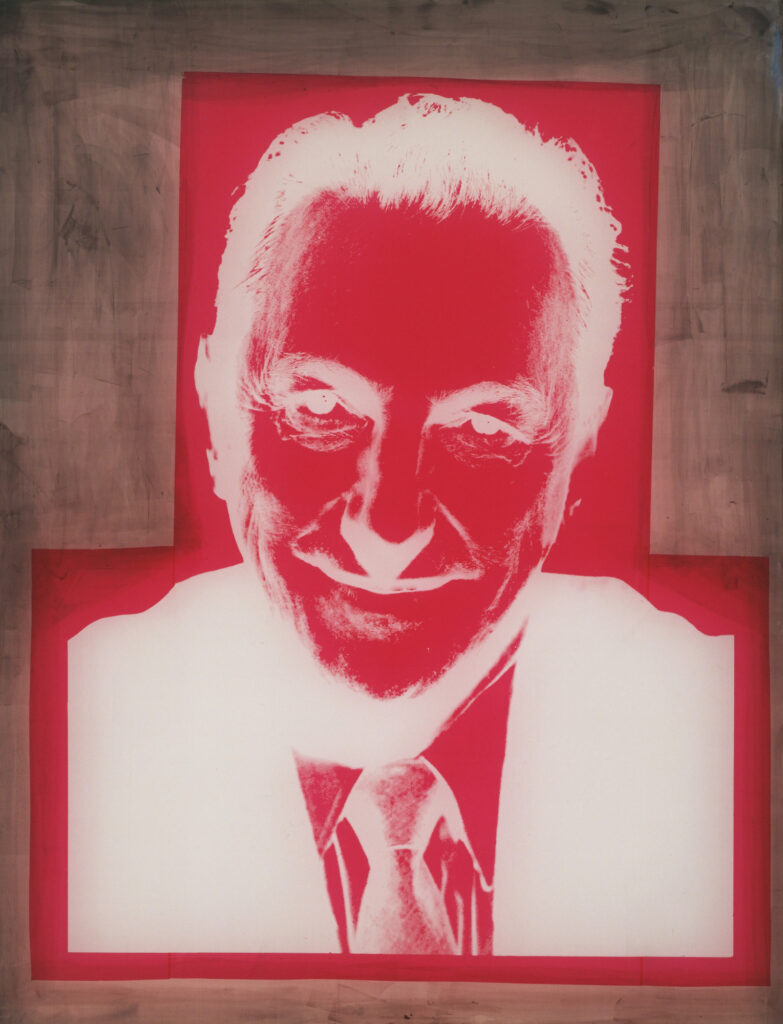
Overnight on tumblr, @voorwerk sent me looking again to Blake Gopnik’s Warhol biography for clues about the freestanding silkscreen-on-plexiglas sculptures Warhol made from some of his film frames.

I didn’t find anything, but Gopnik’s account of Warhol’s Sidney Janis-related commissions did. Janis, a dealer and trustee at the Museum of Modern Art—a combination that museum ethical standards would eventually frown on—commissioned a dumb little portrait of himself using eight family photos, which he donated to MoMA sight unseen in 1967. Gopnik notes that Warhol also got MoMA to take one of the 8-ft tall screens of Janis’s headshot, which the artist had used to make a sprawling 7-panel mural. A mural Janis declined to either buy or donate. Sad!
Point is, Gopnik wrote that Warhol intended for the screen “to be displayed free-standing and lit from behind,” a request MoMA apparently ignored when they showed it in 1968, as part of Janis’s collection gift to the museum [above].

So not only do these see-through Plexi screenprint sculptures relate to the acetates Warhol used to make his screens, in their freestanding frames they could relate to the framed silkscreens themselves.
Previously, related: The Corktown Caper, a stolen Warhol Flowers screen
